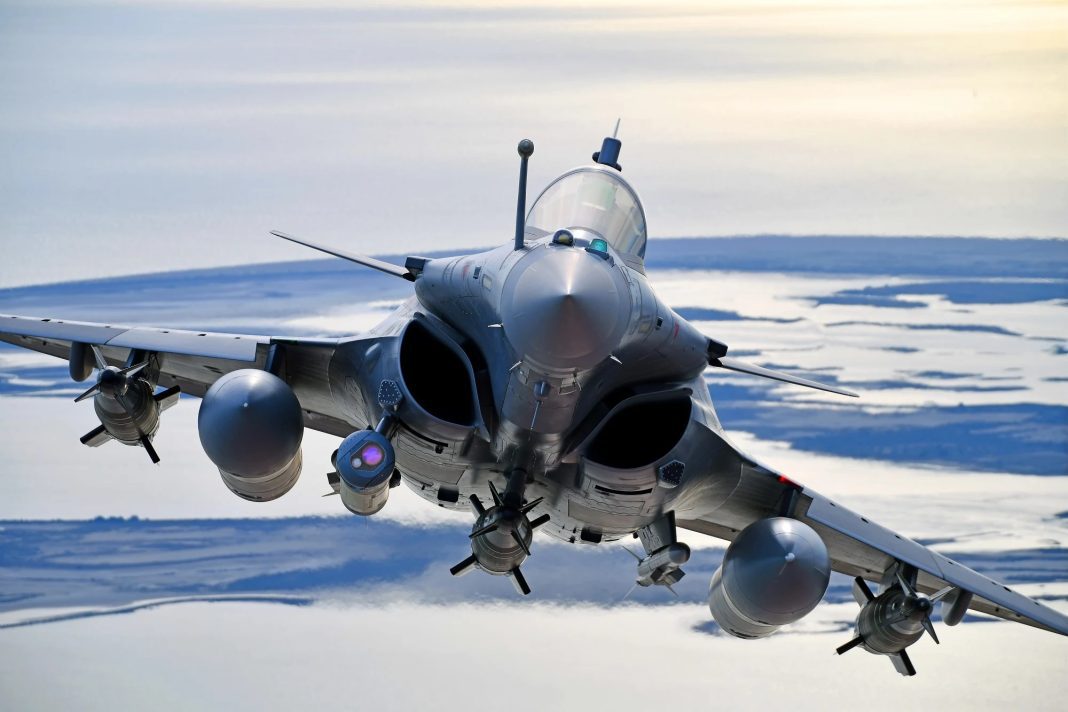India’s long-delayed MRFA Program (Multi Role Fighter Aircraft) to purchase 114 advanced fighter jets appears set for a major change. Instead of inviting several top global aircraft makers to compete, the Indian Air Force is now likely to directly order more Rafale jets from French manufacturer Dassault Aviation.
MRFA Program Faces a Sudden Direction Change
The Air Force originally launched the MRFA Program to choose the most suitable fighter after a thorough evaluation. The program aimed to attract bids from leading aerospace companies across the world, offering a variety of modern aircraft. However, operational urgency has now overtaken the plan.
A sharp drop in squadron strength has created this urgency. After retiring its last MiG-21 fighter jets, India will reduce its combat-ready squadrons from 31 to 29. To maintain balanced security against both Pakistan and China, the Air Force estimates it needs about 42.5 squadrons. Pakistan’s plans to acquire 40 J-35A stealth fighters—based on the advanced F-35 design and produced in China—have further increased the pressure on India.
India Eyes 5th-Gen Fighter Jet Amid Regional Tensions — F-35 or Su-57 on Radar
Faced with this scenario, the Air Force is moving toward bypassing the lengthy competitive bidding process of the MRFA Program to speed up the arrival of new jets.
Global Contenders Left Out of MRFA Program
The direct-purchase decision means many leading aircraft makers will be left out of the MRFA Program contract. This includes Sweden’s Saab with its Gripen fighter, Boeing’s F-15EX from the United States, Lockheed Martin’s F-21 variant of the F-16 Block 70, the Eurofighter Typhoon, and Russia’s Su-57 stealth fighter.
India’s choice to avoid the Su-57 signals a deeper shift in defense procurement. Over recent years, several joint projects with Russia have been reduced, delayed, or canceled. These include deals for Kamov helicopters, Sukhoi fighter upgrades, and even co-development of the Su-57 stealth jet.
⚔️ Unstoppable at Mach 9: Russia arms Su-57 with Zircon hypersonic the U.S. can’t intercept
Rafales, on the other hand, are already integrated into India’s Air Force. The country ordered 36 Rafales in 2016 for €7.8 billion and added another order in April 2025 for 26 Rafale-M naval variants worth €6.6 billion. This familiarity with the aircraft and its systems reduces the time and cost of introducing new jets into service.
Rafale Advantage and Wider Impact
One of the strongest reasons for going with the Rafale is that India has already built the necessary infrastructure for operating these jets. This includes dedicated maintenance hangars, advanced weapons systems, pilot training programs, and simulator facilities. Local manufacturing partnerships are also in place, with Tata producing fuselage sections for the aircraft in India.
The MRFA Program decision to prioritize Rafales also has global consequences. Dassault Aviation’s production line is already running at high capacity due to multiple orders from countries worldwide. A new Rafale costs about €225 million, and deliveries can take up to nine years. This backlog means that other countries, including Ukraine, are unlikely to receive Rafales in the short term.
If India had chosen another aircraft under the MRFA Program, such as the Gripen or F-21, it could have kept Dassault’s production line free while filling up the production schedules of other manufacturers. Saab, for example, has recently signed Gripen export deals with Thailand, Colombia, and Peru. Similarly, the F-16/F-21 production line remains shorter but could quickly become congested if large orders are placed.
Chinese Jets Outgun French Rafales in India-Pakistan War—Indonesia Reconsiders $8B Deal
India’s choice also follows another major Rafale-related deal. Earlier this year, the country signed a $7.4 billion agreement for 26 Rafale-Marine jets to replace its Russian MiG-29K fighters on aircraft carriers. This marks a clear reduction in dependence on Russian defense supplies and a growing reliance on Western technology.
By skipping the competitive phase of the MRFA Program, India aims to get battle-ready aircraft into service much faster. This approach sacrifices the potential benefits of a global contest but ensures that the Air Force receives proven aircraft without lengthy delays. With operational readiness as the main goal, the Rafale expansion plan is set to become one of the largest defense acquisitions in recent years.

